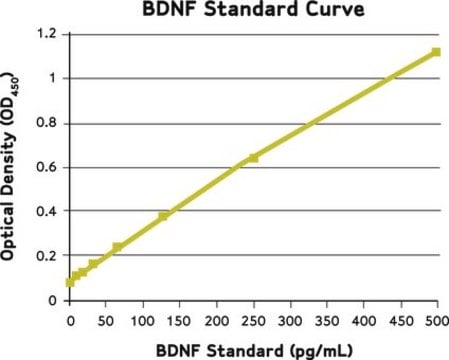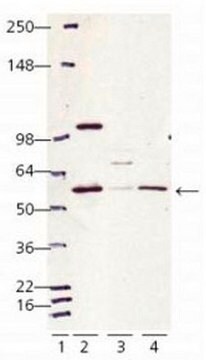MABC40
Anti-LAMP-2 Antibody, clone ABL-93
clone ABL-93, from rat
Synonyme(s) :
lysosomal-associated membrane protein 2, CD107 antigen-like family member B, CD107b antigen
About This Item
Produits recommandés
Source biologique
rat
Niveau de qualité
Forme d'anticorps
purified immunoglobulin
Type de produit anticorps
primary antibodies
Clone
ABL-93, monoclonal
Espèces réactives
mouse
Technique(s)
immunofluorescence: suitable
immunoprecipitation (IP): suitable
western blot: suitable
Isotype
IgG2aκ
Numéro d'accès NCBI
Numéro d'accès UniProt
Conditions d'expédition
wet ice
Modification post-traductionnelle de la cible
unmodified
Informations sur le gène
mouse ... Lamp2(16784)
Description générale
Spécificité
Immunogène
Application
This antibody has been shown to detect LAMP-2 in mouse brain, (Ferguson, 2009).
Apoptose et cancer
Apoptose - Autre
Qualité
Analyse par western blotting : µµ
Description de la cible
Forme physique
Stockage et stabilité
Remarque sur l'analyse
Lysat de cellules NIH/3T3
Autres remarques
Clause de non-responsabilité
Not finding the right product?
Try our Outil de sélection de produits.
Code de la classe de stockage
12 - Non Combustible Liquids
Classe de danger pour l'eau (WGK)
WGK 1
Point d'éclair (°F)
Not applicable
Point d'éclair (°C)
Not applicable
Certificats d'analyse (COA)
Recherchez un Certificats d'analyse (COA) en saisissant le numéro de lot du produit. Les numéros de lot figurent sur l'étiquette du produit après les mots "Lot" ou "Batch".
Déjà en possession de ce produit ?
Retrouvez la documentation relative aux produits que vous avez récemment achetés dans la Bibliothèque de documents.
Notre équipe de scientifiques dispose d'une expérience dans tous les secteurs de la recherche, notamment en sciences de la vie, science des matériaux, synthèse chimique, chromatographie, analyse et dans de nombreux autres domaines..
Contacter notre Service technique








